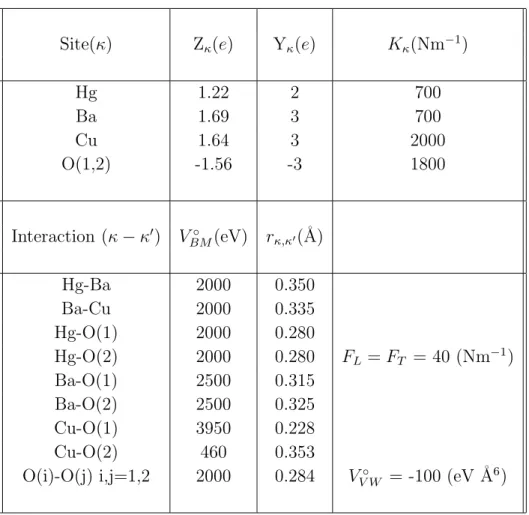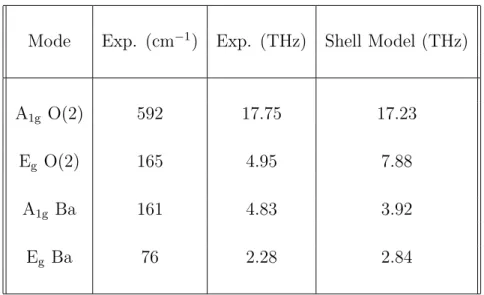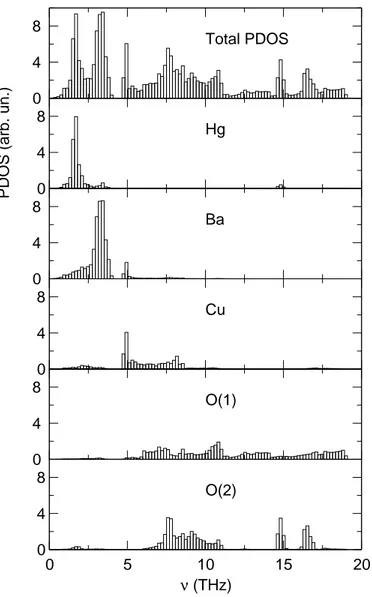Phonon dispersion in 1-layer cuprate HgBa2CuO4+d
Texte intégral
Figure



![Figure 4. Phonon dispersion in HgBa 2 CuO 4+δ , along the main symmetry directions with the reduced vector in-plane ([ ξ ,0,0] and [ ξ , ξ ,0]), and perpendicular to the a*b*](https://thumb-eu.123doks.com/thumbv2/123doknet/13299131.397655/8.892.210.676.125.455/figure-phonon-dispersion-symmetry-directions-reduced-vector-perpendicular.webp)
Documents relatifs
for collective excitation self-trapping:first,longitudinal phonons exist with a long lifetime in both phases [as "rotons" at large wavevectors in the superfluid)..
L’archive ouverte pluridisciplinaire HAL, est destinée au dépôt et à la diffusion de documents scientifiques de niveau recherche, publiés ou non, émanant des
L’archive ouverte pluridisciplinaire HAL, est destinée au dépôt et à la diffusion de documents scientifiques de niveau recherche, publiés ou non, émanant des
recovers the unperturbed frequency (without electron- phonon coupling) at the zone center, finite temperature, and resolution, shift the Raman energy to lower values, with a
It has been observed for ferroelectric materials that ab initio phonon calculations give better agreement with experi- mental data if they are performed at the experimental
This surprising result has been explained by Engelsberg and Simpson /3/ who showed that the in- fluence of the electron-phonon interaction on the dHvA effect is rather subtle
2014 The specular intensity produced by the scattering of monoenergetic incident particles by a flat surface is calculated as a function of the crystal temperature
potential we have obtained the phonon dispersion curve using the self-consistent harmonic approximation and compared results with experiment.. To obtain the interionic



